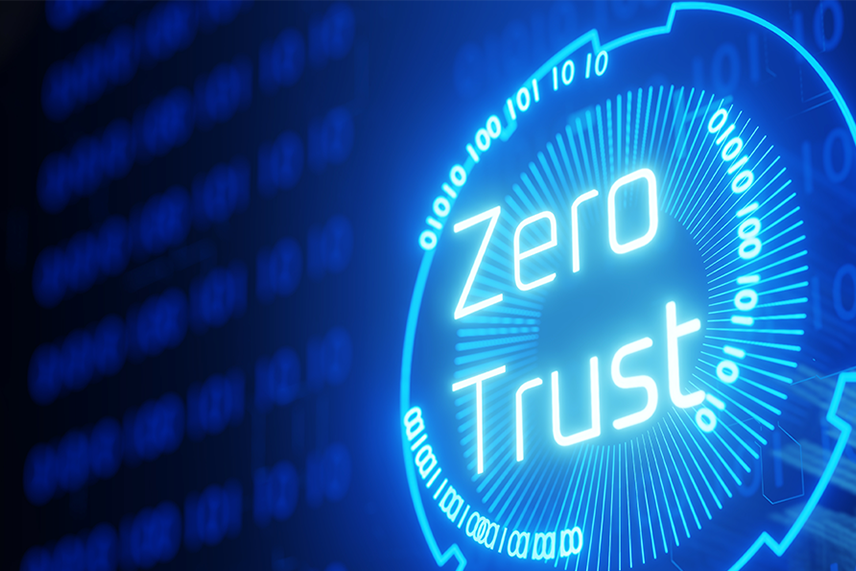Why Your Business Needs Zero Trust Security Now More Than Ever
We live in a time where cyber threats are more sophisticated than ever, organizations can no longer afford to rely on outdated security models. The traditional approach—where users, devices, and networks inside the corporate perimeter are inherently trusted—no longer works. Cybercriminals exploit this outdated trust model, using stolen credentials, insider threats, and lateral movement to infiltrate businesses and steal sensitive data.
Zero Trust Security is the modern cybersecurity approach that eliminates implicit trust and enforces strict verification at every level. Organizations that implement a Zero Trust model drastically reduce their attack surface, improve security posture, and gain the agility to secure cloud environments, remote workforces, and complex IT infrastructures.
What is Zero Trust?
Zero Trust is not a single product or tool—it is a security philosophy that operates under the principle of “Never trust, always verify.” Every request for access to data, applications, or network resources is treated as potentially malicious until proven otherwise.
This approach assumes that threats exist both inside and outside the network, requiring continuous authentication, least privilege access, and constant monitoring to protect against cyberattacks.
The Core Principles of Zero Trust
A Zero Trust framework is built on three fundamental principles:
1. Never Trust, Always Verify
- No user, device, or application is automatically trusted, regardless of their location.
- Every access request is evaluated based on user identity, device security, location, and risk level.
- Multi-factor authentication (MFA) and adaptive access policies are enforced to validate identity.
2. Apply Least Privilege Access
- Users and systems receive only the permissions needed to perform their tasks.
- Role-based access control (RBAC) and just-in-time access ensure that elevated permissions are temporary and closely monitored.
- This minimizes the damage a compromised account or insider threat can cause.
3. Assume Breach
- Organizations operate under the assumption that attackers may already have access to the network.
- Continuous monitoring, network segmentation, and real-time threat detection help identify and contain threats before they escalate.
- Security teams use behavioral analytics and anomaly detection to quickly spot suspicious activity.
How Zero Trust Strengthens Cybersecurity
By adopting a Zero Trust model, organizations can eliminate common security gaps and mitigate the risks of modern cyber threats. Here’s how it impacts key areas:
1. Identity & Access Management (IAM)
- Prevents unauthorized access by continuously verifying user credentials.
- Strengthens identity security with multi-factor authentication (MFA) and passwordless authentication.
- Reduces insider threats by enforcing strict identity governance policies.
2. Endpoint Security
- Monitors all devices in real-time, ensuring they meet security requirements before accessing company resources.
- Protects against malware, ransomware, and phishing attacks that target remote workers and mobile users.
- Enforces strict security policies for bring-your-own-device (BYOD) environments.
3. Network Segmentation
- Divides the corporate network into smaller, isolated segments, preventing attackers from moving laterally.
- Ensures that even if a breach occurs, it remains contained to a limited part of the infrastructure.
- Reduces the risk of widespread network attacks, such as ransomware outbreaks.
4. Data Protection & Compliance
- Encrypts sensitive data at rest and in transit to prevent unauthorized access.
- Implements strict access controls to protect regulated data from breaches.
- Helps organizations comply with GDPR, HIPAA, NIST, and other security regulations.
5. Continuous Monitoring & Threat Detection
- Uses AI-driven security analytics to detect and respond to threats in real-time.
- Identifies unusual login attempts, insider threats, and unauthorized access requests.
- Provides full visibility into cloud security risks, shadow IT, and high-risk user activity.
Why Businesses Need Zero Trust Now
Cybersecurity threats are evolving faster than traditional security models can keep up. Organizations that delay adopting a Zero Trust approach put their data, employees, and customers at risk.
By implementing Zero Trust, businesses can:
✔ Prevent breaches before they happen through strict identity verification.
✔ Minimize damage if an attack occurs by restricting lateral movement.
✔ Protect remote workers and cloud applications from unauthorized access.
✔ Meet compliance standards and avoid regulatory fines.
✔ Strengthen overall cybersecurity posture with continuous monitoring and adaptive security policies.
Taking the First Step Toward Zero Trust Security
Adopting Zero Trust does not mean replacing your entire security infrastructure. It is an evolution, not a revolution. Organizations can start by:
- Conducting an identity and access security assessment.
- Implementing multi-factor authentication and endpoint security policies.
- Segmenting networks and enforcing least privilege access controls.
- Monitoring user behavior and access patterns to detect anomalies.
- Building a Zero Trust roadmap to gradually integrate security best practices.
As cyber threats continue to grow, Zero Trust is no longer optional—it’s a necessity for modern businesses. Taking a proactive approach to security ensures that organizations can operate with confidence, knowing that every access request is verified and every potential threat is contained.
Is your organization ready to implement a Zero Trust security model?
Let’s work together to build a customized security strategy that protects your business from evolving cyber threats.
